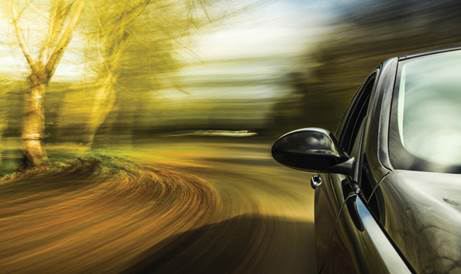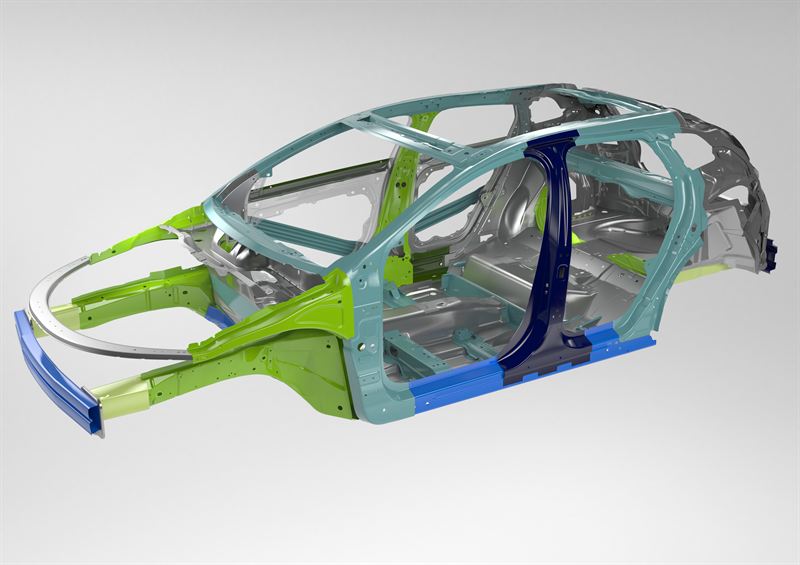Automotive growth – capitalizing on lightweighting and safety trends

Automotive steel accounts for about 12% of global steel use. Even though vehicle sales are increasing globally, steel weight per vehicle will reduce. However, driven by lightweighting and safety trends, use of advanced high-strength steel (AHSS) in the automotive segment is expected to increase significantly in the future. This creates possibilities for well positioned companies. It is forecast that over 60% of total steel used in vehicles will be AHSS by 2020.
“Although total steel usage in vehicles has decreased, use of AHSS has increased and is forecast to continue growing. Despite tough competition from other materials, we consider the best solution in future vehicle to be a combination of different materials, with steel playing an important part. We are of course enhancing our offering and continuously improving the properties of the steel best suited for use in vehicles,” says Arnaud Guerendel, Head of Global Automotive Sales in SSAB Europe.
The four cornerstones in SSAB’s automotive strategy
- Grow with existing customers
- Win new customers globally
- Focus on chosen niche applications as well as entering new applications
- Research into new steels
We will continue to focus on our five chosen niche applications - bumpers, car seats, side impact beams, chassis and structural details - which have good growth potential and match SSAB’s product portfolio. At the same time, we are also looking at new smaller components such as wheels, powertrain, chassis, suspension and brakes.
The big automotive challenges are energy efficiency and safety trends
The automotive industry is continuously seeking ways to build more fuel-efficient cars. At the same time, safety improvement is being driven by legislation and customer needs. Our challenge at SSAB is to develop more resistant materials allowing light weight. This is how we help our customers to achieve not only fuel efficiency but also to decrease CO2 emissions and their carbon footprint.
Manufacturers are calling for lightweight, strong materials with good environmental properties that can also be manufactured at reasonable costs.
“We at SSAB are closely following these trends and responding to them with our long experience of AHSS. In automotive, SSAB is well positioned to capitalize on these trends. We are considering both medium- and long-term design aspects and the long-term consequences of materials. We are developing more resistant materials as well as a broader product offering to enable lightweighting in anticipation of and response to future OEM demands,” continues Guerendel.
Grow with existing customers and win new customers globally
SSAB’s main markets are in Europe and the Americas. However, approximately 50% of automotive assembly is in APAC, and the market is growing. Many developing countries, such as India, are also placing more focus on vehicle safety.
“Our steels are in very specific segments. Even though we have a leading position within selected AHSS applications, we have clear possibilities to grow with existing and new customers – both in existing markets and in some selected new geographical areas.” AHSS volume in the automotive industry is expected to grow 9% annually in the near future, even more in some areas, including also emerging markets. “Our steels are well suited to respond to the increasing share of more complex steels in vehicles. For example, we expect a growing need for coated steels made in Hämeenlinna for BIW and safety applications,” explains Guerendel.
Winning new customers means tailored solutions, which SSAB is able to provide as a small company. SSAB aims to meet the international automotive VDA standard in all our production for the automotive industry. This makes us an even more attractive choice.
Enter new applications
With Borlänge, Raahe and Hämeenlinna allowing us production flexibility and efficiency, SSAB has the perfect combination of assets for the automotive industry. This will help us to step into applications where we are not yet present and consequently backup our growth in automotive by market areas complementing those we have not considered to date.
There is huge potential in new applications well suited to our products, since we can help carmakers to lower both weight and cost. This means looking at smaller components such as wheels, powertrain, chassis, suspension and brakes.
Research into new steels
To be a forerunner, we have to work closely with car designers in order to input AHSS properties and material data at the engineering level. There is very fierce competition from other materials, especially from aluminum and other materials such as carbon-fiber and plastic. Success in the automotive segment will provide us with good input for continuous improvement in other segments.
In terms of costs, steel can be a very competitive material to use taking into account its 100% recyclability and unrivalled carbon footprint.
Cold forming is a sustainable and often cost-efficient method for automotive steels. Cold-formed steels are easier to weld and join, and an environmentally-sound alternative since they require no energy intensive heating processes. SSAB has developed steels that lend themselves to cold forming. Basically even 50% of a car’s body weight could be made from cold-formable Docol – we can aim for a vehicle to score high ratings in crash tests, to be lightweight and 100% recyclable.
Docol
We are constantly pushing performance boundaries with our new products. For example, Docol 1500 MZE ultra-high-strength steel, which is tailored for formability in demanding applications, helps to improve environmental performance by lowering vehicle weight. The new grade is suitable for a range of applications where corrosion protection, energy absorption and low weight are required.
In 2015, SSAB launched tailor-made, high-strength steels for the automotive industry. The relaunch of the Docol brand for the automotive industry completed SSAB’s new product portfolio.

The car industry can contribute to a sustainable world by choosing the right material for each application and use the most cost-effective and sustainable production methods. There are a number of Docol steel grades available for each color in this BIW drawing.
http://www.ssab.com/globaldata/news-center/2016/01/18/08/06/racing-into-the-future-with-docol-tubing
http://www.ssab.com/globaldata/news-center/2015/10/26/13/45/safe-cars-with-docol
Category and tags

